World's Biggest Welcome in Croatia: Day 11 - Njivice to Martinšćica (Kayak, Bike)
April 6, 2019 - Putting Croatian adventure tourism on the map, with the biggest welcome in the world. Day 11 of this incredible 2011 adrenaline trip covering 2,500 km along the Croatian coast.
The World's Biggest Welcome, an ambitious adventure tourism project in 2011 in Croatia enters Day 11 of this 2019 appreciation of one of the finest tourism promotion projects ever in Croatia.
The plan? To showcase the diversity and fabulous offer of adventure tourism in Croatia by following a GPS route the length of the Croatian coast in the shape of the word 'Welcome' - thereby creating the biggest welcome in the world from a hospitable tourism country.
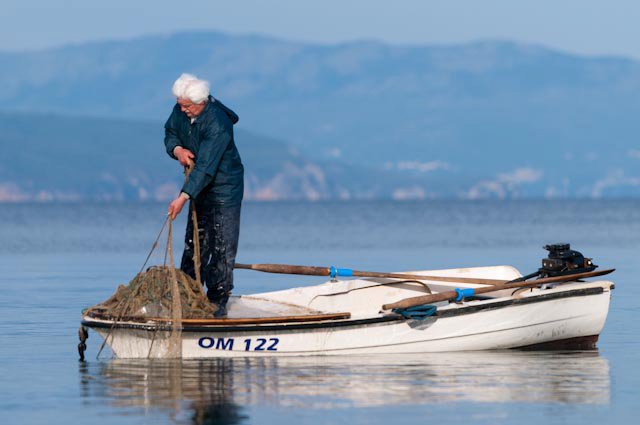
Day 11 moved on kayak and bicycle from Nijvice to Martinšćica.

61 kilometres for the day: 31 km by kayak from Njivice to Merag, followed by 30 km bike ride from Merag to Martinšćica to continue forming the ‘E’ in ‘Welcome’.
Unlike the rest of the days of the journey, Day 11 saw only a few photos taken by photographer Luka Tambača.
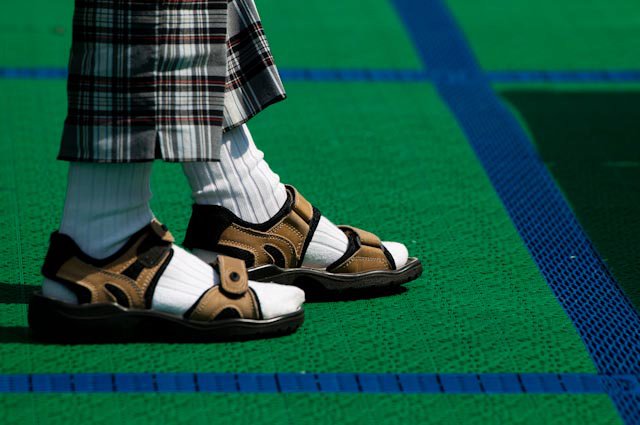
One of which was on the ferry to Cres from Krk. Lacko wrote that there were even some tourists from Germany traveling as well.
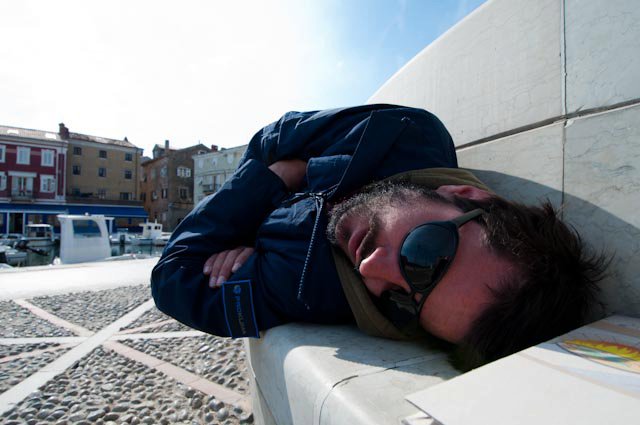
And another of them napping on a bench on the island of Cres with the caption “We were so tired that day.” Understandable.
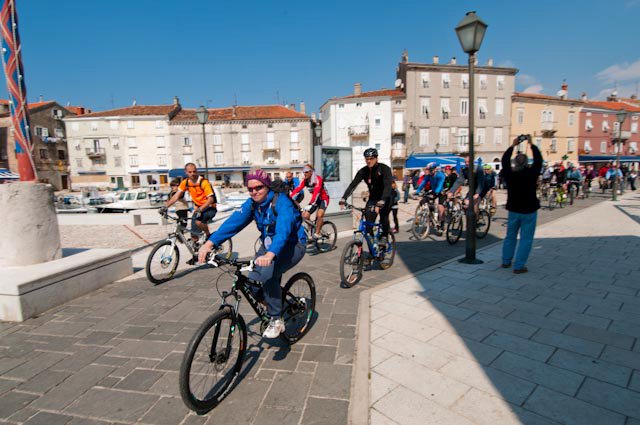
But then a bike race on Cres to wake them up.
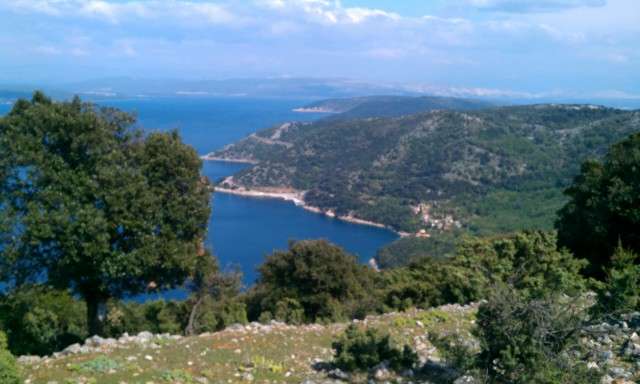
A stellar photo with a view on both Cres and Krk from the old path above the village of Merag.
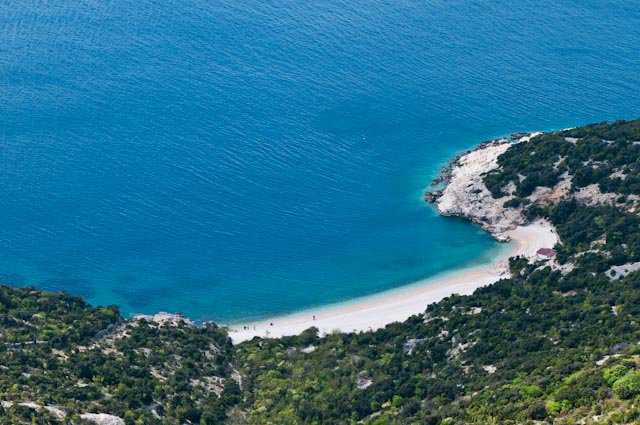
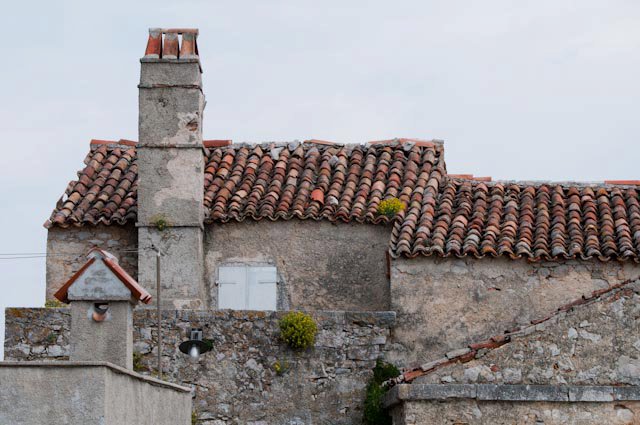
And Lubenice.
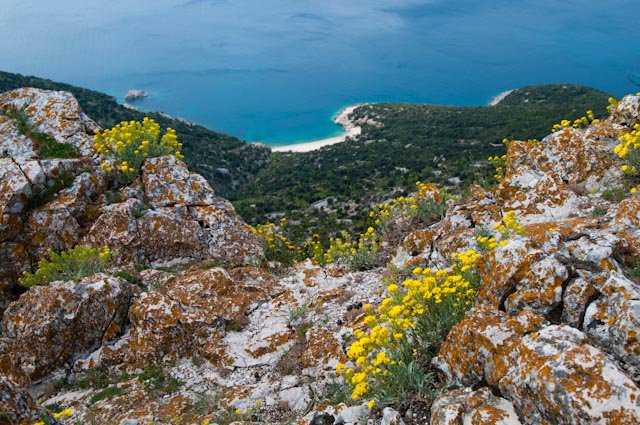
Lubenice in bloom, too.
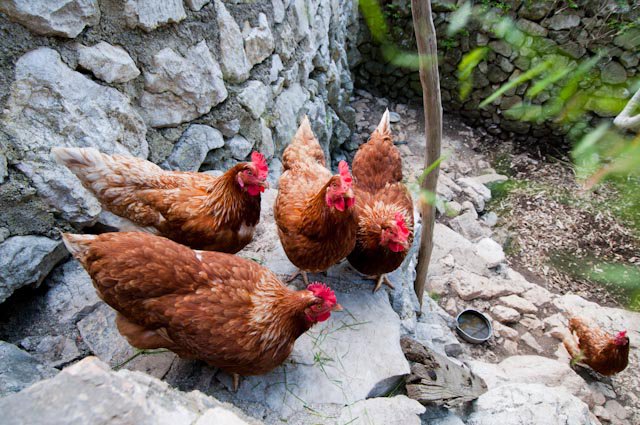
They even fed hens with grass there.
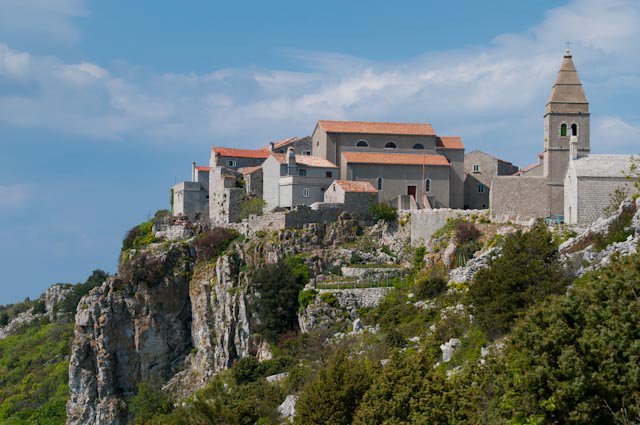
Lubenice in all of its glory.
A key part of the project was promoting tourism, and the official website has details of the key places visited during the day.
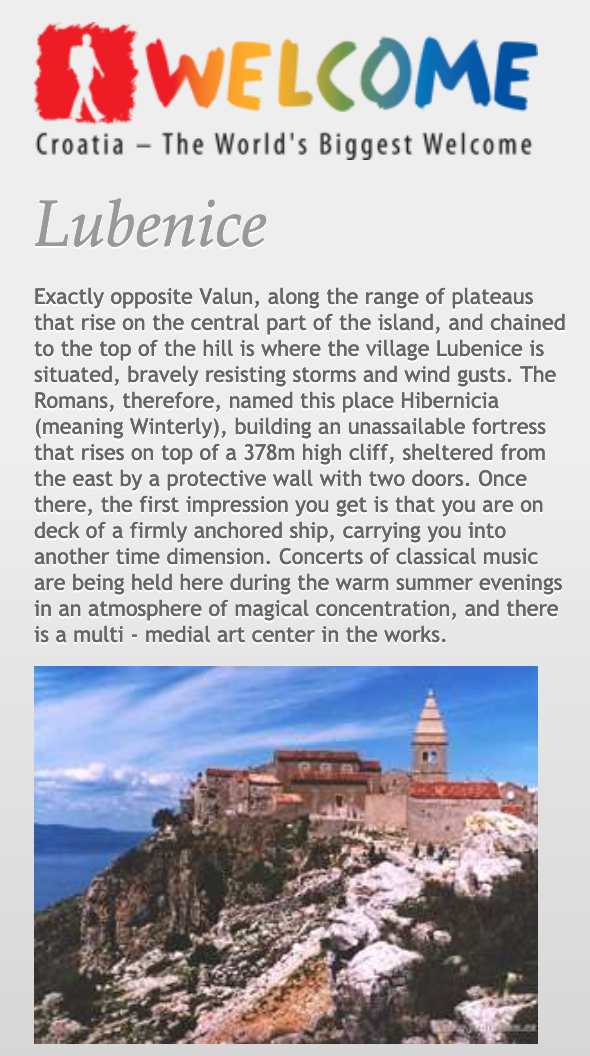
Lubenice was the one landmark they did visit on this part of the journey, which is an ancient fort city on the island of Cres, exactly opposite Valun.
You can see the entire project on the Welcome website, as well as much more of Luka Tambaca's stunning photography on the Welcome Facebook page.
Tune in tomorrow for Day 12, as Lacko moves by kayak, foot, and bicycle from Martinšćica to Mali Lošinj.
To follow the whole project from the start, follow the dedicated TCN page.
First EU Firefighting Exercise to Be Held on Cres
ZAGREB, April 3, 2019 - The first international firefighting exercise in the history of the EU, MODEX CRES 2019, is being held on the island of Cres on April 7-10, with firefighters from Croatia and seven other European countries participating.
A press conference held in Rijeka on Tuesday heard that the MODEX CRES 2019 exercise will continue for 52 hours and will cover the entire island.
The exercise will include 300 firefighters with more than a hundred vehicles as well as Croatian and Italian Canadair aircraft. The exercise is part of the EU's Civil Protection Mechanism and is aimed at improving cooperation between member states during interventions in natural disasters.
Croatia's chief fire officer Slavko Tucaković described the exercise as a historic event and yet another opportunity to check the country's homeland security system.
Large wildfires around Europe last year were a warning about the importance of international cooperation and coordination of firefighting services, Tucaković said. This exercise will test capabilities of receiving firefighting teams from other countries, their transport, communication, mobility, joint actions and logistic support, he added.
Vehicles and firefighters will be transported on regular ferry lines as well as landing craft. Firefighters will also practice helicopter landing and test IT systems for crisis management and the use of drones, he added.
More news on fire-fighting in Croatia can be found in the Lifestyle section.
Cres to Get Cheese Factory Worth More Than Five Million Kuna
The desire is to breathe some life into, and renew the old tradition of island sheep farming on the island of Cres in the Kvarner region through cooperation with local OPGs and cheese factories.
As Marta Duic/Poslovni Dnevnik writes on the 2nd of April, 2019, in the village of Loznati on the beautiful island of Cres on Monday, construction began on the Loznati agricultural cooperative.
As the co-manager Bruno Žic explained, their goal is to restore old fame to island livestock breeding and continue to maintain the tradition of sheep farming that has been present on the island of Cres for a great many years.
"In the seventies during the last century, this place had a cheese factory and we decided to make our contribution to the preservation of that tradition. The Loznati agricultural cooperative is a small family cooperative, we have seven members and we're open to cooperate with small OPGs and cheese producers. Our desire is to bring as many people back to sheep farming as we can, we're very ambitious and we will try to restore the former numbers,'' stated Žic.
As he claims, the capacity is 500 litres of milk per shift, ie an impressive 1000 litres per day, and the value of the investment stands at 5.600.000 kuna.
"Of the total investment, two million kuna is non-refundable because we have secured it through EU funds, and the remainder is partly our money and partly from an HBOR loan," added Žic.
When construction works are completed, the Cres site will occupy a total area of 540 square metres.
Agriculture Minister Tomislav Tolušić was present at the opening ceremony on Cres.
The Faculty of Agriculture in Zagreb has dealt with the technology for us, and on that basis we started to realise the whole project and the [involved] works. The HACCP standards required in production will be implemented here with us, and the cheese factory itself will be a combination of modern and traditional. We tried not to ruin the looks of the village,'' concluded Žic.
Make sure to follow our dedicated business page for much more.
Click here for the original article by Marta Duic for Poslovni Dnevnik
Cres and Susak Show Why Sheep and Olives Work Well Together
As is the case with many Mediterranean countries, the relationship between olives and the Croatian coast runs deep, it is a story that would take all the time in the world to tell and it boasts a plethora of different personal meanings for many individuals and their families.
Olives and the coast go hand in hand and the entire practice of olive picking has well and truly withstood the test of time and the various winds of change that time has brought with it over the many centuries that have passed. Skills and knowledge are passed down through generations, and traditions are upheld through time.
Despite the modern world in which we're increasingly being dragged feet first into, many families along the Croatian coast, from the extreme south of Dalmatia to the Kvarner region, bring things to a standstill when ''olive time'' comes along. During that special time of year, families are bonded again and again through the picking of the olives, and the work that follows.
As Morski writes on the 22nd of March, 2019, the northern Adriatic islands of Cres and Susak were presented at the fourth International Congress on the revitalisation of terraced landscapes in the Canaries.
Dr. Goran Andlar from the Faculty of Agriculture in Zagreb and Tanja Kremenić from Cres who is currently doing her PhD in Padua discussed the terraced landscape of the Croatian island of Cres, which embodies a kind of olive and sheep cooperation, writes the portal Otoci.net.
''The olive-sheep model was a very interesting component of the presentation to the public, and we take it for granted, it's natural to us. Sheep are natural fertilisers, they're natural cleansers of excess vegetation and they're bred extensively so they does not represent any sort of big extra effort for humans. Why is it so important that we preserve terraced landscapes?
If they're not used, there is a risk of erosion and a loss of fertile anthropogenic soil. They are also very important today because they represent an alternative to mechanised high-intensive agriculture and are an example of the implementation of pertinent concepts of development such as "sustainable development" or the "circular economy" in reality, but here on the ground,'' stated Tanja Kremenić.
At one congress back in 2016, which was held in Padua, the beautiful island of Cres presented this charming sheep-inspired theme with a poster, and then a one-day trip to the island of Cres was organised for the participants of the congress.
Give our dedicated lifestyle page a follow for much more.
Energetic Transition Process Begins on Croatian Islands
The Clean Energy Secretariat on EU islands held an energy transition workshop attended by representatives from the Croatian islands of Brač, Cres, Hvar, Korčula and Lošinj last week.
As Morski writes on the 18th of March, 2019, Croatian islands officially launched an energetic transition up and down the coast. Back at the beginning of February this year, the Secretariat's initiative for clean energy for the EU's islands, which was initiated by the Croatian MEP Tonino Picula, announced a list of 26 European island communities that will receive expert and advisory support for the energy transition strategy in the coming period, writes Pokret otoka (Island movement).
Among the 26 selected islands are four Croatian island communities: The Cres-Lošinj archipelago and Brač, Hvar and Korčula. The two-day workshop, organised with the cooperation of the cities of Cres and Mali Lošinj, the OTRA Island Development Agency, LAG Kvarner Islands and Pokret otoka (Island movement) as local partners, gathered forty representatives of selected islands that, with expert assistance, will set the first foundations of energy transition plans. The gathering took place last weekend and this is the first of a total of ten workshops which will be carried out by the Secretariat for the EU islands in the forthcoming period.
Representatives of transition teams from all five islands participated in the workshop in Mali Lošinj, which will work on strategy development in cooperation with partners and experts in the coming period. The goal of the two-day workshop, besides transferring knowledge and experiences from different areas, has also been gathering, networking and strengthening the island's stakeholders for further cooperation in the energy transition process.
The Cres-Lošinj archipelago, set as one of the six European pilot projects, should have its energy transition plan should be ready by the end of summer 2019. The remaining twenty islands, including Brač, Hvar and Korčula, will have their plans in place by 2020. Despite the abundance of renewable energy sources, many islands currently depend on fossil fuels and energy imports from the mainland. The transition to clean energy can help the islands not only become more self-reliant and prosperous, but also open up new opportunities for employment in their communities and encourage further direct development of the islands.
The other islands that will be pilot projects in the initiative are the Irish Islands, Sifnos in Greece, Salina in Italy, La Palma in Spain and Culatra in Portugal. Twenty other islands will follow their development and enjoy the suppor of experts in the same direction. An expert team of the Secretariat for the islands will produce guides to initiate energy transition, encourage community involvement and discuss project financing in the forthcoming period.
Croatian islanders will have the opportunity to cooperate with each other, create a network of good practices, educate themselves and and participate in various events. It is important to emphasise the fact that the whole initiative is based on the "bottom up" approach, and the primary principle of transition success is based on the involvement of all local community stakeholders, which include the representatives of local self-government units, entrepreneurs, educational institutions, and of course civic initiatives.
Make sure to follow our dedicated lifestyle page for more information on Croatian islands and much, much more.
Click here for the original article by Ana Marija Jakas for Pokret otoka (Island movement)
EU Funds for Croatia's Island Fishermen and Fish Processors
Through the Maritime and Fisheries Operational Program, the amount of 234.9 million kuna was agreed for 635 users for their projects on seventeen islands in Croatia, while the amount of 176.7 million kuna was paid to as many as 570 beneficiaries.
As Morski writes on the 8th of March, 2019, the largest amount of beneficiaries of contracted and paid funds are on the island of Ugljan, where as much as 27 percent of the total contracted funds for beneficiaries on the islands have been contracted. Given the large number of fishermen on the island of Ugljan, particularly in Kali, the measures that have been taken relate to (among other things) health and safety and energy efficiency on fishing vessels, as well as an additional measure aimed at improving the conditions for product placement on the market, thus achieving a higher price for the products themselves.
''Our fishermen, fish farmers and [fish] processors are well acquainted with the opportunities the Operational Program for Maritime and Fisheries provides, and that has also been confirmed by the growth of the available funds [for this sector] over the last two years. Since the beginning of the implementation of the Maritime and Fisheries Operational Program, a total of 42 tenders have been issued to date, of which 34 have been during the mandate of this government. So far, 47.27 percent of the allocation, or 1.2 billion kuna, has been contracted, and almost 600 million kuna has been paid,'' said the minister of agriculture, Tomislav Tolušić.
Investment on the island Brač is set to occur immediately after the investment on Ugljan. On the other fifteen islands, most of the investments have been directed towards fishing and measures related to it, examples of that are Hvar, Dugi Otok and Cres.
There is also investment occurring in the field of energy-efficient heating and cooling systems in construction facilities for fish processing, as opposed to outdated ''classic'' systems (fossil fuel systems). Money will also be pumped into improving business processes by acquiring new IT equipment and more modern business management software.
Within the Croatian Maritime Operational Program for the Programming Period 2014-2020, 348.7 million euro (252.6 million euro from the EU budget and 96.1 million euro from the budget of the Republic of Croatia) have been made available.
These funds are extremely important to Croatia's fishing sector and as such meets their very specific needs over the aforementioned time period. Within the operational program, in cooperation with all interested stakeholders from scientific institutions, local and regional self-government units, state institutions and entities from the fisheries sector, 36 different measures were covered for the entire sector, from sea and freshwater catches and farming, to the processing and eventual marketing of fish products, to producer organisations and FLAGs.
Make sure to stay up to date on fishing in Croatia and much, much more by following our dedicated business page.
Cres, Losinj, Hvar, Brac, Korcula in 1st EU Clean Energy Transition Islands Initiative
Brussels, 18 February 2019 - Today, 26 European islands have officially launched their clean energy transition with the support of the European Commission’s Clean Energy for EU Islands Secretariat.
In the first phase, 6 islands, the Aran Islands (Ireland), the Cres-Lošinj archipelago (Croatia), Sifnos (Greece), Culatra (Portugal), Salina (Italy) and La Palma (Spain) will develop and publish their clean energy transition agendas by summer 2019. The other 20 islands will do so by summer 2020.
These islands are:
• Hvar, Croatia
• New Caledonia, France
• Pantelleria, Italy
• A Illa de Arousa, Spain
• Brač, Croatia
• Crete, Greece
• Azores, Portugal
• Gotland, Sweden
• Korčula, Croatia
• Samos, Greece
• Ibiza, Spain
• Öland, Sweden
• Kökar, Finland
• Cape Clear, Ireland
• Mallorca, Spain
• Orkney, UK
• Marie-Galante, France
• Favignana, Italy
• Menorca, Spain
• Group of Off-Grid Scottish Islands, UK
Dominique Ristori, Director-General for Energy at the European Commission, said:
“The 26 islands selected display a remarkable potential and enthusiasm for developing strong and lasting multi-stakeholder collaborations around the clean energy transition. By embarking on this path, not only will they become more energy self-reliant and prosperous, but also provide inspiring examples for other islands and Europe as a whole. This in turn will help the EU achieve its ambitious climate and energy targets.”
There are more than 2200 inhabited islands in the EU. Despite having an abundance of renewable sources of energy, such as wind, solar and wave energy, many of them currently depend on expensive fossil fuel imports for their energy supply. The clean energy transition can help islands not only become more self-sufficient and prosperous, but also unlock new employment opportunities in their communities.
The objective of the Clean Energy for EU Islands Secretariat is to help as many European islands as possible embark on and advance their clean energy transition in a way that includes the whole island and its stakeholders. Based on experience with successful transition processes, the key to success is to involve all levels of governance of the islands - citizens, municipalities, local businesses, universities and schools – as well as relevant stakeholders from the mainland and bring them on board to actively support and shape their own transition.
Croatian MEP Tonino Picula said: "Islands are becoming more and more visible on the European agenda. The support for 26 islands throughout the Union is an important step in making island communities torchbearers in clean energy transition. This is a first, but an important, step in securing permanent EU assistance to islands. Congratulations to everyone!"
The 26 islands were selected based on their potential for establishing a high-quality transition process with the support of the Secretariat. In order to serve as inspiring examples for as many European islands as possible over the coming years, special attention was paid to including islands covering a broad variety of geographic and contextual conditions.
To learn more about the project and follow progress on its interactive map, click here.
Exciting Night at Sea: Baby Born on Ferry Cres - Krk!
Bojan Purić writes for the Otoci.net website about the exciting event that took place during the night of Friday to Saturday, February 9th to 10th this year: various circumstances led to a baby born on ferry between the islands of Krk and Cres!
Life on the islands in Croatia is wonderful, almost idyllic, with amazing scenery, peace and quiet throughout most of the year etc., but when it happens that you need urgent medical assistance in February, it's possible that things just might go a bit wrong. The pregnant lady on Cres got into labour on the Friday night, and the original plan was for helicopter transport to be organized, to take her to Rijeka on time to have her deliver the baby in the hospital. Unfortunately, for reasons that are still unknown, that couldn't be organized on time, so the crew of the Ilovik ferry (which spends the night at Cres anyway) organized the special run for the mother-to-soon-be, but the baby was in a big rush to come out, and was born halfway between Cres and Krk islands.
So, it was nowhere close to the Rijeka hospital, where the mother and the baby were consequently transported once they reached Krk. There's no indication that the mother had any medical help with her, but supposedly everything went well for both of them.
We congratulate the happy parents for their newest addition to the family, and although things went well this time, hope that this doesn't happen again soon: babies should be born in hospitals, not on ferries. We also hope that the parents will take this amazing opportunity to name the baby born on ferry Adrian or Adriana (variants of which are common Croatian names), as there probably isn't a more appropriate name for a child born - on the Adriatic sea!
New Project for Cres - Mystical Footpaths of Tramuntana
As Morski writes on the 2nd of February, 2019, the I Love Beli (Udruga Volim Beli) association was founded spontaneously back in 2011 and since then has been operating in the northern part of the beautiful island of Cres, Tramuntana. For years, the association's active work, creative ideas and various projects have been committed to revitalising that part of the island where the growing population exceeds the average of other rural areas.
In many conversations with Cres-based entrepreneurs, as well as visitors and other locals, a great need for the area to maintain its existing natural resources, to expand the supply, and to ensure the safety of recreants and hikers was felt.
This is exactly how the ideas for an association between PD Kamnenjak, Tomislav Bandera Anić, and the author of "Tramuntana Hike&Bike", was born. The idea represents a network of hiking and cycling trails on Tramuntana, as was reported by Pokret otoka (Island movement).
Tramuntana is one of the few examples in Kvarner and beyond, where such projects are carried out in accordance with the practices of the Croatian Mountaineering Association, which also approved this project and included the hiking trails in the register of hiking trails. The Kamenjak mountaineering club is responsible for the supervision and the execution of all the work on the footpaths and hiking trails on the island of Cres, to which the Croatian Mountaineering Association assigned this function.
There has been a very good response from volunteers from both the island and the mainland, without which this action would not be possible to undertake. People recognise the important of the project, respond with enthusiasm and are happy to do what they can to help it along.
Many entrepreneurs have been providing financial support through donations for both this project and numerous other activities the Volim Beli association is carrying out.
The project of marking out the hiking trails and footpaths has the full support of the Cres Tourist Board and has received donations from many local business owners, entrepreneurs and companies, and further cooperation with many other island business owners is expected.
The "Mystical Trails of Tramuntana" project is partly a continuation of the "Tramuntana Hike&Bike" project, which will work to offer nature lovers, hikers and other lovers of the great outdoors increased safety and far more opportunities to enjoy everything the stunning island of Cres has to offer.
Make sure to stay up to date by following our dedicated lifestyle page for much more.
100 Million Euros to Be Invested in Golf Resort on Cres
It took three years from the initial announcement to the finalisation of the first phase of the preparation of project documents, but that is how things work in Croatia, especially with projects which have never been seen before. And the golf resort on Cres, in the Punta Križe area, is definitely among them, reports Jutarnji List on January 31, 2019.
For this project, the investor, the Jadranka Group, has made an agreement with the Krk Diocese for the use of about 320 hectares of land for 50 plus 50 years. It has also hired Ernie Els to design two championship golf courses with 18 holes.
The Matalda golf project recently passed a round of voting at the County Assembly, which adopted amendments to the spatial plan of the Primorje-Gorski Kotar County, which now include the golf course location, removing the main administrative obstacle. Before this, the project passed the public consultation process and was discussed by the Cres and Mali Lošinj town councils, where majorities also supported it.
According to Sanjin Šolić, the CEO of Jadranka, the goal is to improve the quality of the entire destination to a five-star level. As Šolić points out, Jadranka plans to invest around 100 million euro in the golf project, in addition to almost 200 million euro which the company has already spent on the nearby island of Lošinj.
“We now have basic legal preconditions for golf resort to be planned at this location. The spatial plan earlier had another location earmarked for golf, but it was not interesting for us for many reasons, from the ground configuration to the ownership structure. Matalda has proven to be ideal for golf, and we have launched an initiative that has succeeded after three years. After initial doubts, the County has accepted it,” said Šolić, showing a comprehensive analysis which Jadranka commissioned.
“We also have a study of socio-economic justification of the project, drafted by the Hotel Faculty in Opatija. The area in question is protected, but golf is possible there with the protection measures we intend to implement. Now we have the right to prepare a draft project that must be approved by the state commission appointed by the Ministry of Environmental Protection. This means that another environmental impact study will be done, the third one,” explained Šolić.
The total project area is 320 hectares, and the two golf courses that Jadranka plans to build will cover less than 20 per cent of the land. “Buildings will cover just two per cent of the total area. There will be a single hotel that, according to the County decision, cannot be for less than 500 people. The total capacity allowed is 800, which means no fewer than 500 people in the hotel, and no more than 300 people in the villas. As far as the docks are concerned, a classic marina is not allowed. However, there is a possibility of having a helicopter landing spot,” said Šolić.
He added that it was impossible to discuss precise figures since the project has not yet been developed and it is still unknown whether they will build it in stages or all at once. “When everything is done, I doubt it can be less than 100 million euro," said Šolić. He also added that it was difficult to talk about timelines because they cannot influence how much time state bodies will need to make a new environmental impact study, but he believes that the construction of the first course could begin in 2020.
He noted that golf by itself was not profitable. “What is important to us is that golf will fill our accommodation units out of the main tourist season. Our hotels will be filled all year round. Another great effect is marketing. The fact that golf will be present on Lošinj and Cres will ensure that a special group of guests will hear about the island and want to come here.”
As for local critics of the project, Šolić explained they are a negligible minority. “Whatever people do, they are always criticised by the same group, without any real arguments. Strategic assessment and environmental impact study prove that there is no risk of adverse effects on nature. We took all segments of nature protection into account,” said Šolić.
More news on golf projects in Croatia can be found in the Lifestyle section.
Translated from Jutarnji List (reported by Luka Benčić).

